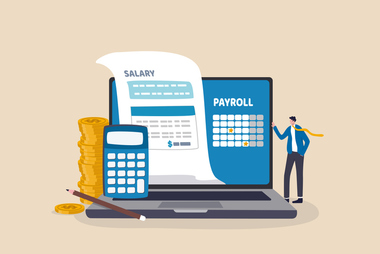A 2019 report by the Work Institute found that 43% of new hires quit within 90 days of employment, often for reasons that could have been prevented by the employer.
When the organization surveyed 37,000 people who had left their jobs in the previous year, they found that:
- 22% left for career development.
- 12% left for work-life balance.
- 11% left because of manager behavior.
- 9% left for compensation and benefits.
- 8% left for well-being.
- 8% left because of the job characteristics.
- 5% left because of the work environment.
Although the cost of losing an employee can vary by company, the Work Institute conservatively estimates it to be around $15,000 per employee lost.
3 Ways To Prepare Your New Hires for Success
To retain new employees, you need a long-term strategy that prepares your staff for organizational success. Below are 3 Ways To Prepare Your New Hires for Success.
1. Make onboarding a strategic endeavor
Instead of viewing onboarding as an administrative process, regard it as a strategic effort. Of course, you must handle the administrative side of things, such as new-hire documentation and compliance training. But also critical is properly integrating new hires into your organization.
Per an article published by the Society for Human Resource Management, staffing and HR experts say that onboarding should last at least one year “because how employers handle the first few days and months of a new employee’s experience is crucial to ensuring high retention.”
Here are some elements you could add to your company’s onboarding process:
- Implement an online onboarding portal that new hires can use to fill out paperwork and learn more about your company.
- Make sure the new employee’s workstation is ready prior to his or her first day.
- Be transparent about job duties, responsibilities and expectations.
- Explain why goals and expectations should be met.
- Help the new hire get to know his or her co-workers.
- Deliver resources and training specific to the new hire’s role.
- Offer mentoring or coaching, such as by assigning a “go-to person” to the new hire.
- Provide feedback so the new hire knows what’s working and what’s not working.
- Schedule frequent check-ins to determine whether the employee’s needs are being met.
2. Invest in continuous development
As stated earlier, studies rank “career development” as the No. 1 reason employees quit their jobs.
Career development enables employees to not only obtain and maintain the skills needed for their roles, but it also enables them to progress in their career path. “Employees who do not see a clear path are at risk of leaving,” says one expert in an article published by Brandman University.
By the end of the employee’s first year, you should know whether he or she is likely a good fit for the long term — and if so, what his or her career development path looks like.
3. Aim for open dialogue
Per the 2019 Work Institute report, “Employers must listen, understand, and commit to realistic and shared employee-employer expectations and follow through on those expectations to improve retention of new hires.”
These shared expectations can be attained through open dialogue, which is key to building employee-employer trust. Whether an issue involves pay, benefits, scheduling, job duties, career advancement, workplace relationships or something else, you might be able to overcome them with open dialogue.





